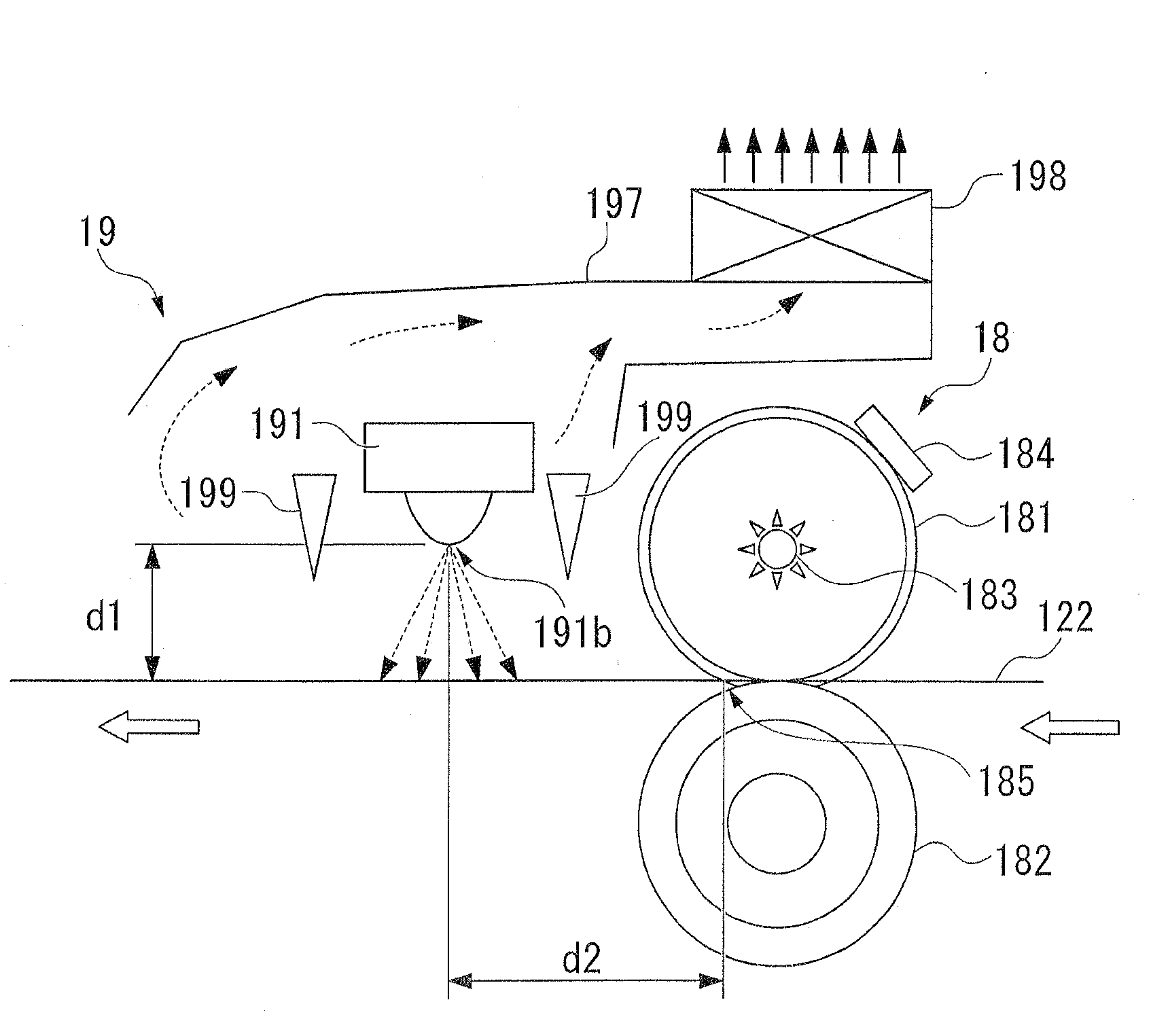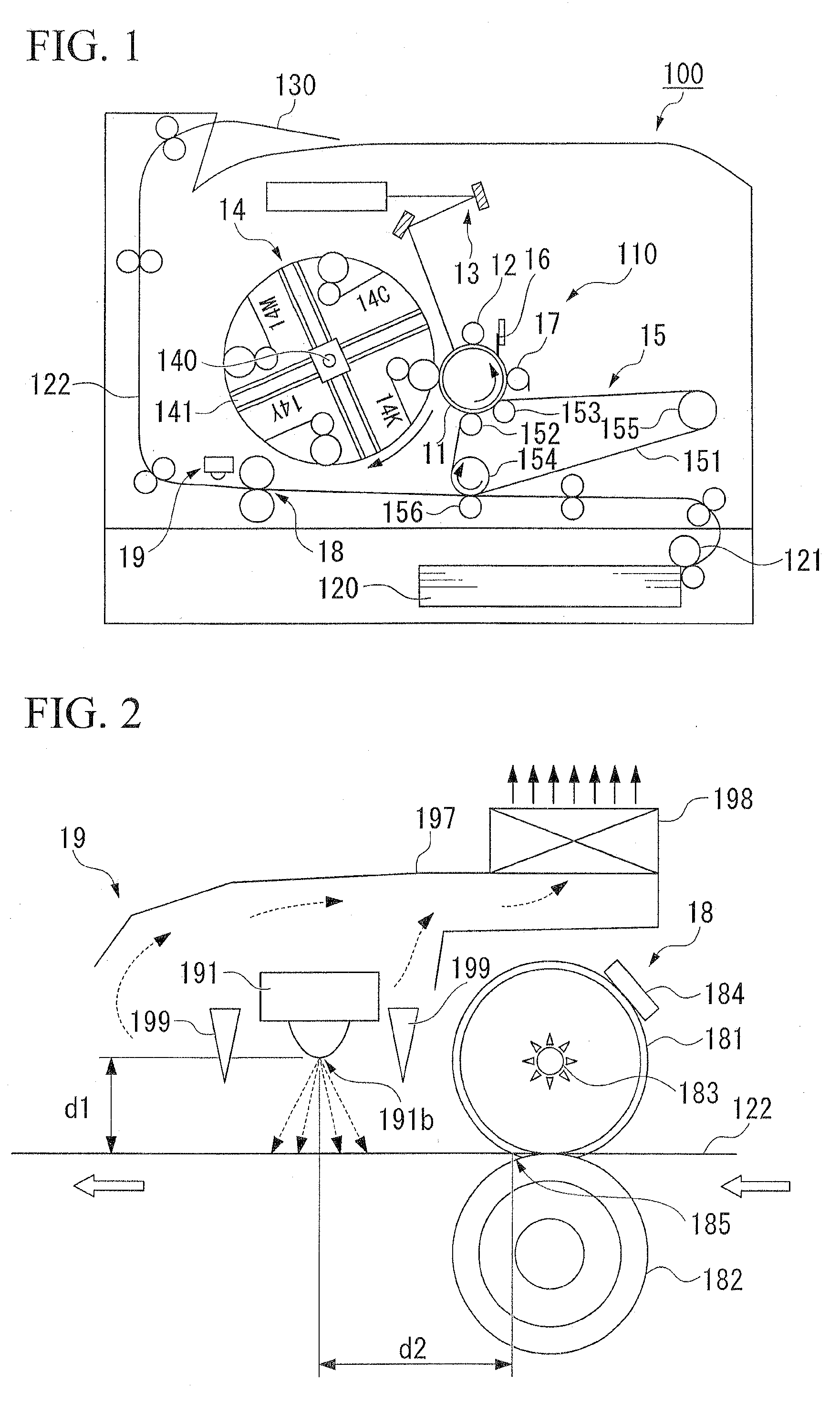Image Forming Device and Image Forming Method
- Summary
- Abstract
- Description
- Claims
- Application Information
AI Technical Summary
Benefits of technology
Problems solved by technology
Method used
Image
Examples
examples 1 to 6
[0105]An image forming device having the structure shown in FIGS. 1 to 3 was employed, and a toner obtained in advance was housed in the developer. The design of the fixing unit 18 and the cooling unit 19 are as follows.
(Fixing Unit)
[0106]For the fixing roller 181, a design was employed in which 200 μm thick silicon rubber having a hardness of 5 (JIS-A) was coated to the surface of a 1.0 mm thick aluminum tube having an outer diameter of φ30 mm, after which a 30 μm thick PFA (a copolymer of tetrafluoroethylene and perfluoralkoxyethylene) tube was adhered via a primer to the surface of the above coated aluminum tube. A halogen heat lamp 183 was disposed inside the fixing roller 181, and lighting of the lamp was controlled so that the surface temperature of the fixing roller was a constant 170° C. according to a thermistor 184 that was in contact with the surface of the fixing roller 181.
[0107]For the pressure roller 182, a solid iron rod having a core with an outer diameter of φ18 mm...
examples 7 to 10
[0174]For the image forming device, the design shown in FIGS. 4 and 5 was employed after appropriate modification to suit the developing agent. For the developing agent, the previously obtained toner A (cyan toner) was employed and was housed in the developer container. Note that the design of the fixing unit 28 and the cooling unit 29 is as follows below.
(Fixing Unit)
[0175]For the fixing roller 281, a design was employed in which 200 μm thick silicon rubber having a hardness of 5 (JIS-A) was coated to the surface of a 1.0 mm thick aluminum tube having an outer diameter of φ30 mm, after which a 30 μm thick PFA (a copolymer of tetrafluoroethylene and perfluoralkoxyethylene) tube was adhered via a primer to the surface of the above coated aluminum pipe. A halogen heat lamp 283 was disposed inside the fixing roller 281, and lighting of the lamp was controlled so that the surface temperature of the fixing roller was a constant 170° C. with use of a thermistor 284 that was in contact wit...
example 12
[0185]With the exception of employing a two component developing agent produced using toner B as the developing agent, image formation was carried out in the same manner as in Example 9, and evaluated. These results are shown in Table 2.
PUM
 Login to View More
Login to View More Abstract
Description
Claims
Application Information
 Login to View More
Login to View More - R&D
- Intellectual Property
- Life Sciences
- Materials
- Tech Scout
- Unparalleled Data Quality
- Higher Quality Content
- 60% Fewer Hallucinations
Browse by: Latest US Patents, China's latest patents, Technical Efficacy Thesaurus, Application Domain, Technology Topic, Popular Technical Reports.
© 2025 PatSnap. All rights reserved.Legal|Privacy policy|Modern Slavery Act Transparency Statement|Sitemap|About US| Contact US: help@patsnap.com



